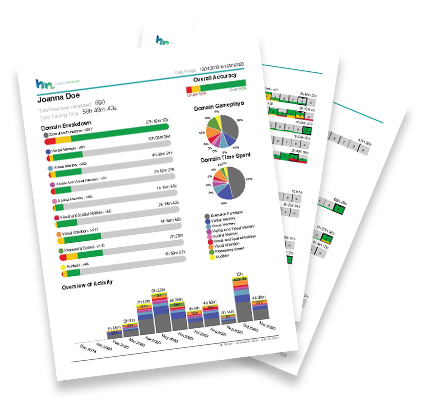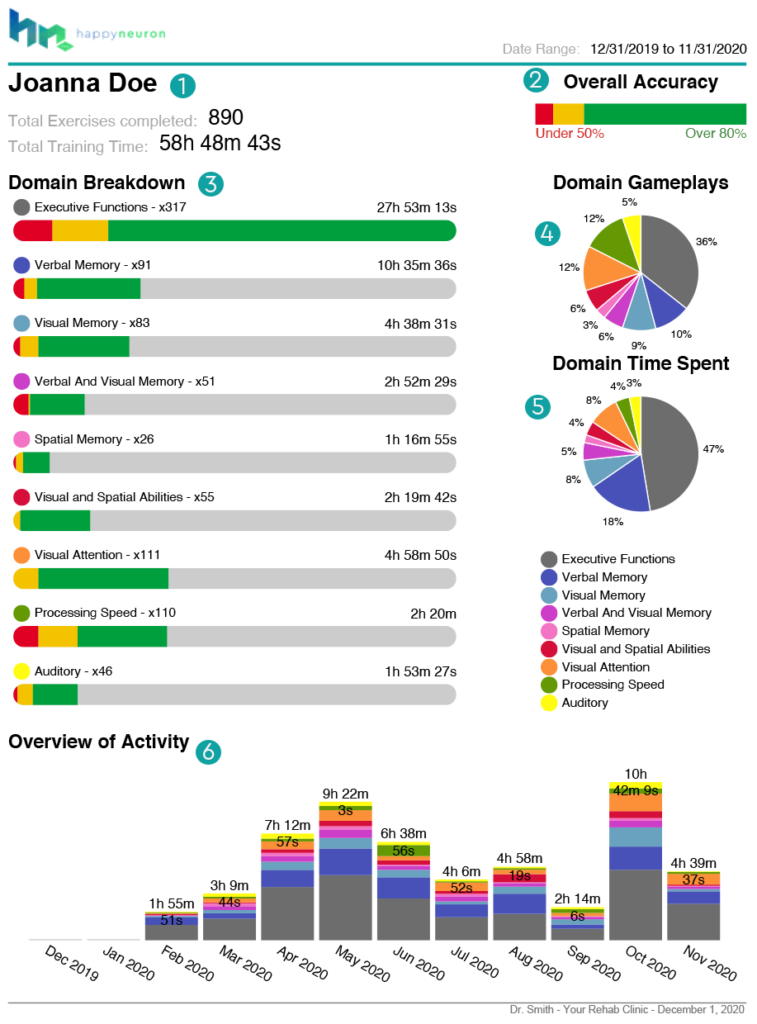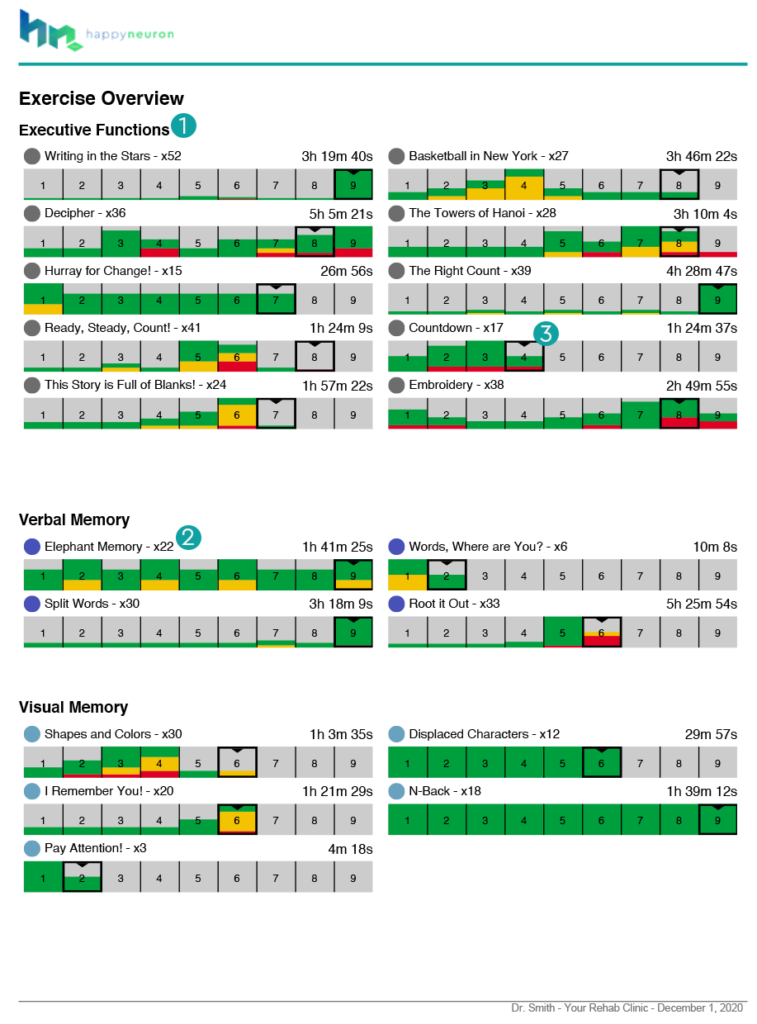
Red
Seeing a lot of red within a client’s chart means that the client is performing poorly more than they are succeeding. This, however, does not mean the patient cannot succeed while performing a specific exercise. It indicates that the client is being challenged, which the therapist should address by discussing and building new or revisiting some previously explained cognitive strategies. Some red is normal and is desirable because it indicates that your patient is being appropriately challenged.
Yellow
Yellow indicates that your client is being appropriately challenged. When your client performs at a yellow level, they may need some guidance to optimize the cognitive strategy that they are employing. This may look like addressing anxiety in regards to performing an exercise within a given time constraint or helping your client be more attentive to detail. When your client optimizes the strategy that they are employing, they will be able to perform exercises demonstrating mastery which will show up with increased “green” in their reporting.
Green
When a client has high amounts of green in their chart, it means that they are performing the exercises with mastery of accuracy and response time. When your client demonstrates mastery, applaud them for their success! You may want to try having your client perform exercises at more difficult levels, or use the Scheduled Exercises feature to adjust the Advanced Settings within an exercise to create a more customized challenge for your client. If you challenge your client at a more difficult level and they have difficulty, do not be discouraged. The challenge is what brings growth. In time, they will master the next level gracefully!





